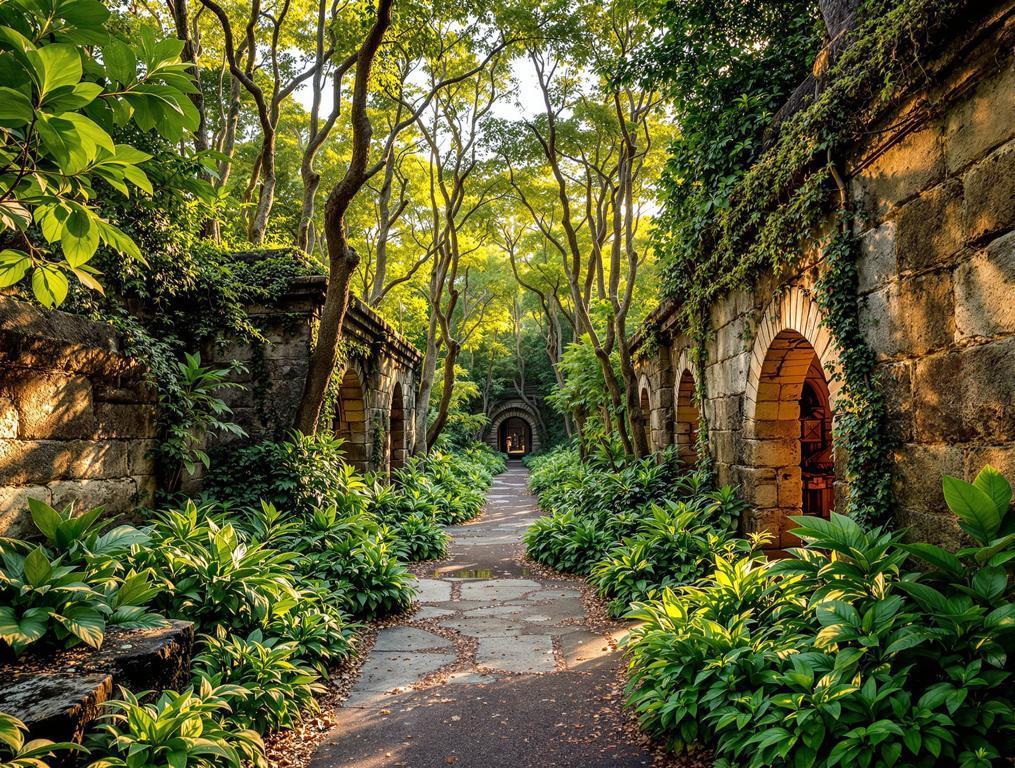The asphalt on Koloa Road shimmers in the July heat as I drive through the iconic tunnel of eucalyptus trees. Emerging from this natural gateway, I find myself in a Hawaiian town that defies expectations. With just 2,200 residents spread across 1.2 square miles, Koloa packs more historical significance per acre than anywhere else on Kauai. While thousands of tourists crowd Lahaina’s Front Street on Maui, here I count only seven other visitors exploring the birthplace of Hawaii’s sugar industry.
Like a historical treasure chest in miniature, this tiny town holds 14 heritage sites along its 10-mile trail—a ratio of nearly 12 historic landmarks per square mile. As I stand before the weathered stone remnants of Hawaii’s first successful sugar mill, I wonder why more people aren’t here discovering America’s tropical turning point.
14 heritage sites where Hawaii’s economy was transformed forever
The Koloa Heritage Trail feels like stumbling upon the Hawaiian equivalent of Plymouth Rock, yet I have it almost entirely to myself this morning. Founded in 1835, this plantation revolutionized Hawaii’s economy decades before Pearl Harbor would put the islands on America’s strategic map.
“We’re standing at ground zero of Hawaii’s economic transformation,” explains my guide at the Koloa History Center, pointing to sepia photographs of the first sugar harvest. The plantation attracted workers from China, Japan, Portugal, and the Philippines, creating Hawaii’s multicultural identity that persists today.
Walking through Old Koloa Town’s preserved wooden storefronts reminds me of Colorado’s historic mining towns, where industrial heritage shaped entire communities. The sugar industry’s influence here runs deeper than any resort development could, with families tracing their Kauai roots back to plantation contracts signed almost two centuries ago.
I count just nine cars in the historic district’s parking lot—a stark contrast to the hundreds that pack Lahaina’s lots by mid-morning. Each of Koloa’s heritage sites tells part of the sugar story, from the imposing Sugar Monument to the humble worker housing that sheltered the first immigrants.
Why locals prefer Koloa to Lahaina’s tourist crowds
Unlike Maui’s commercialized sugar towns, Koloa maintains what Hawaiians call “country feeling.” While Lahaina welcomes over 2 million visitors annually, Koloa sees a fraction of that traffic, preserving its authentic character like South Carolina’s Georgetown preserves its colonial past.
“Tourists rush through Lahaina in three hours buying trinkets. Here in Koloa, people actually learn something about why Hawaii is the way it is. They leave understanding our islands, not just photographing them.”
The numbers tell the story: 6.3 heritage sites per 1,000 residents in Koloa versus barely 0.2 in Lahaina. This concentration of history creates an immersive experience impossible in more touristed areas, where commercial development has erased much of the past.
Summer’s dry weather makes this the perfect season to explore both Koloa’s history and natural wonders. From the Spouting Horn blowhole shooting saltwater 50 feet skyward to the quiet beaches at Poipu just two miles south, Koloa offers Hawaii without the Instagram crowds.
Summer 2025: The perfect time to discover Koloa’s uncrowded secrets
Visit Koloa during July and August when the weather is consistently dry and perfect for heritage walking tours. The morning hours before 10am offer the most solitude at historical sites, while afternoons are ideal for beaches.
For the best experience, start at the Koloa History Center (open 9am-4pm Tuesday-Saturday), where free maps detail all 14 heritage sites. Their guided tours ($15) on Wednesdays and Fridays at 10am provide context missing from guidebooks.
The Blue Room Cave and Makauwahi Cave Reserve offer natural wonders as significant as the town’s human history, with the latter preserving fossils dating back 10,000 years. These sites connect Koloa’s sugar story to the deeper environmental history of Kauai, much like ancient European villages preserve layers of history.
As I leave Koloa, driving back through that tunnel of towering eucalyptus trees, I’m struck by how places like this survive in our over-touristed world. The historical density here—something like finding Colonial Williamsburg compressed into Central Park—offers a rare chance to understand how a single American business venture transformed an entire culture. In Koloa, Hawaii’s multicultural story unfolds without the commercial noise that drowns it out elsewhere, a quiet testament to history hiding in plain sight.
